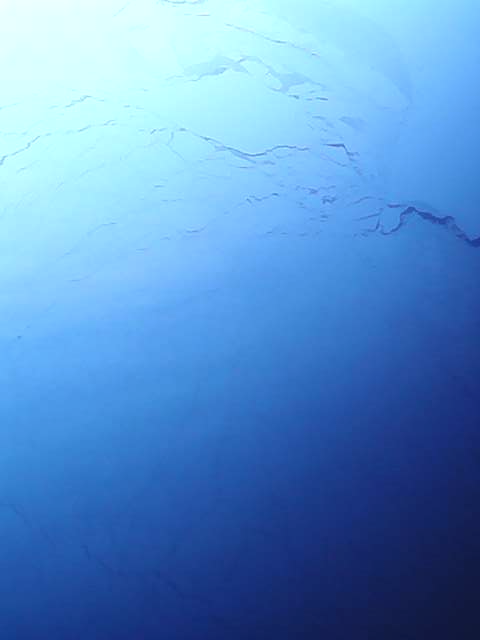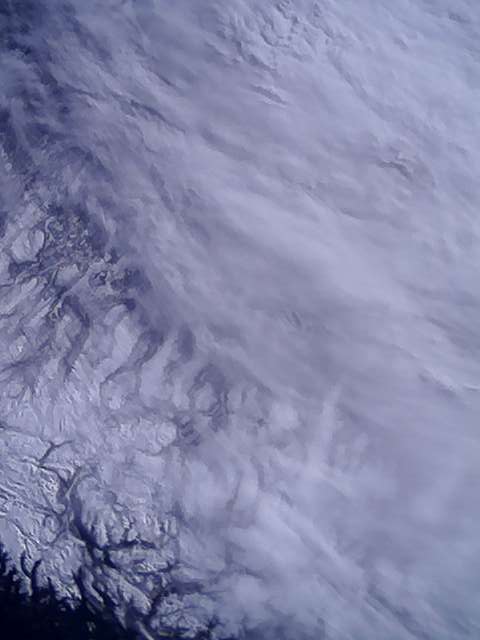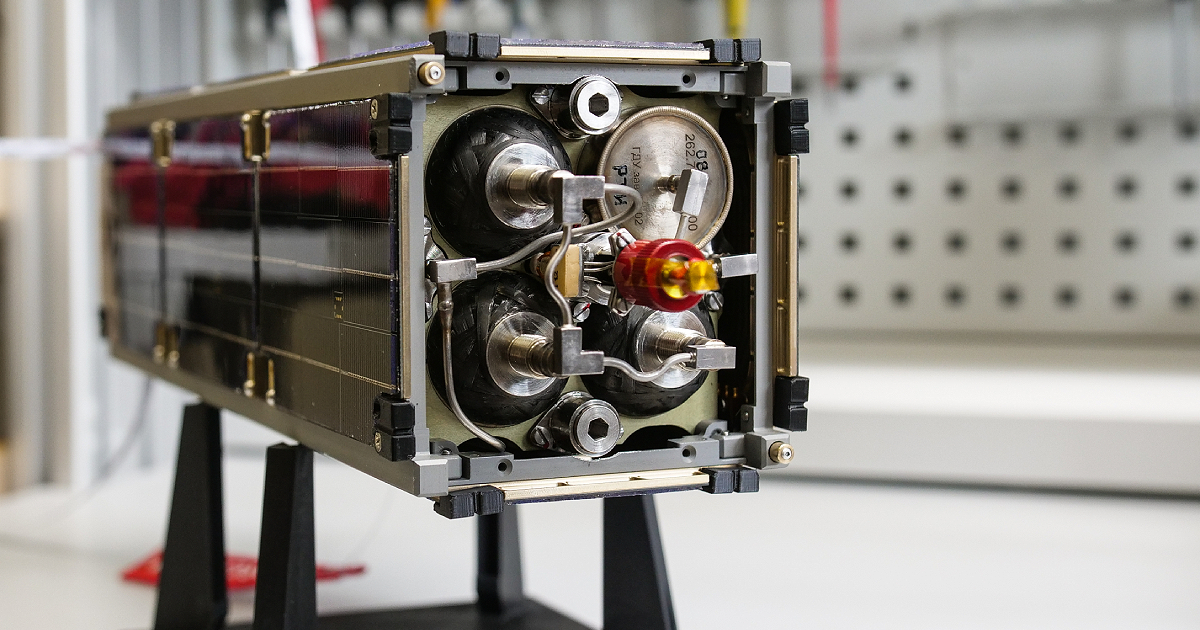It’s been almost nine months since our CubeSat entered the Earth’s orbit. Plenty of work has been completed in this period: we established communication with the satellite and received the first image of the Earth surface, successfully tested the stabilization mechanism and other on-board systems, oriented Geoscan-Edelveis by the Earth’s magnetic field, and made the telemetry protocol available to all radio amateurs. Now it’s time for a new important stage, as we start trials of the cold gas thruster system developed by the Fakel Experimental Design Bureau with the support of the Foundation for Assistance to Small Innovative Enterprises in Science and Technology.
The thruster consists of three high-pressure storage tanks and one low-pressure operating tank, called the receiver. The gas flows from the storage tanks to the receiver, which acts as a buffer holding the gas until it is released through the nozzle, generating thrust. There is a special valve between the storage tanks and the receiver, which regulates the gas flow. It is locked at launch and needs to be enabled before the thruster can be used.
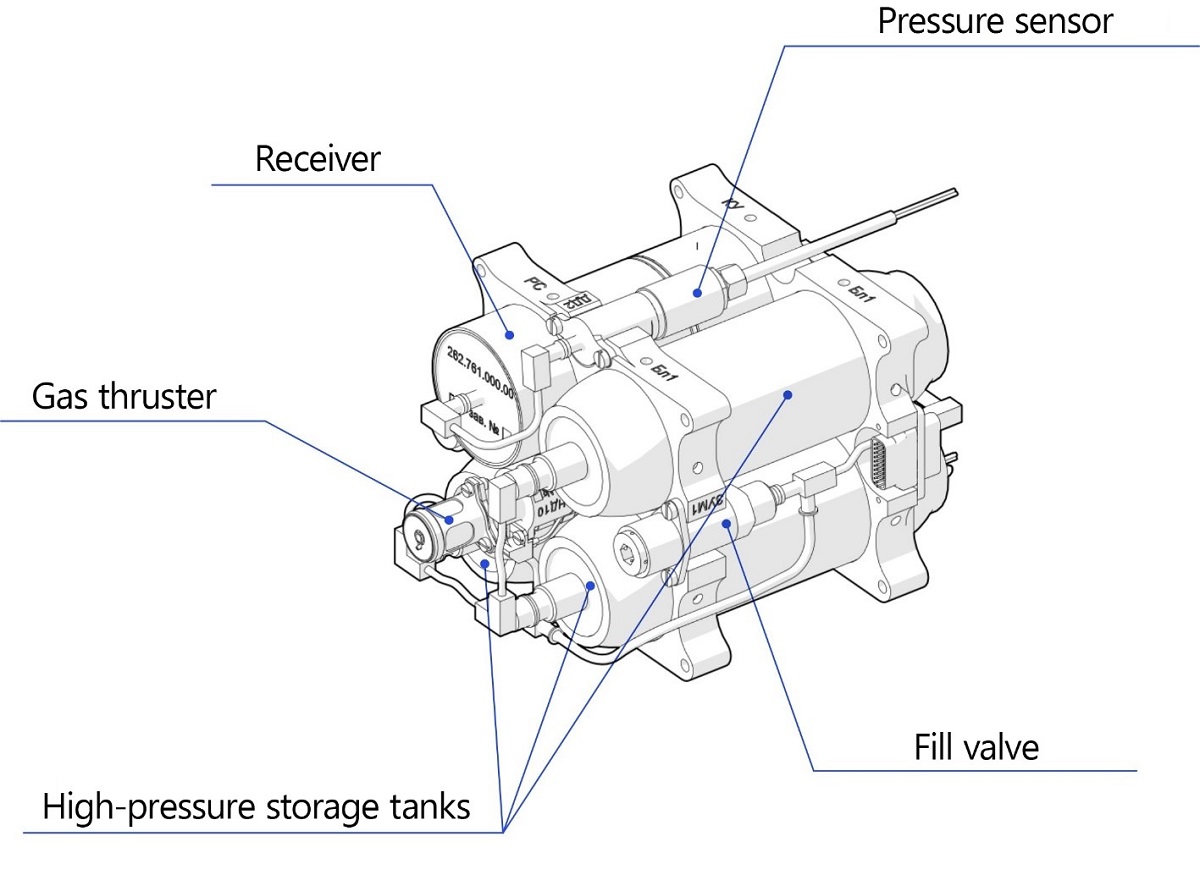
Cold gas thruster. The valve is located between the high-pressure tanks
From April 26 to 28, specialists from Geoscan’s Small Spacecraft Development Department conducted a series of preparatory thruster trials. Different elements of the thruster units were tested individually, with the results of each test prompting what experiment would come next.
Stage One. The tests started on April 26 with a check of the receiver operation. The idea was to make sure the gas flowed through the valve to the thruster nozzle. In preparation for the launch, the high-pressure storage tanks on board Geoscan-Edelveis were filled with nitrogen to 110 atm. The receiver was also pumped with nitrogen at 2.5 atm. During a communication session, the specialists on the ground energized the output valve and saw the pressure drop to 2.3 atm. This meant the receiver release valve was operational.
Stage Two. The next day, we proceeded to enabling the valve between the storage tanks and the receiver. Doing this requires turning on a heater for 20 minutes. This deforms the valve, unblocking the propellant feeding line. The operator uploaded the appropriate task during a communication session, then had to wait until the next session to check the sensor data, which indicated everything was in proper working order.
Stage Three. On April 28, the team tested the valve’s operation. The telemetry readings showed the pressure dropping in the storage tanks and increasing in the receiver. The technicians then filled the receiver to 9.6 atm before checking the valve again – the thruster was working perfectly fine!
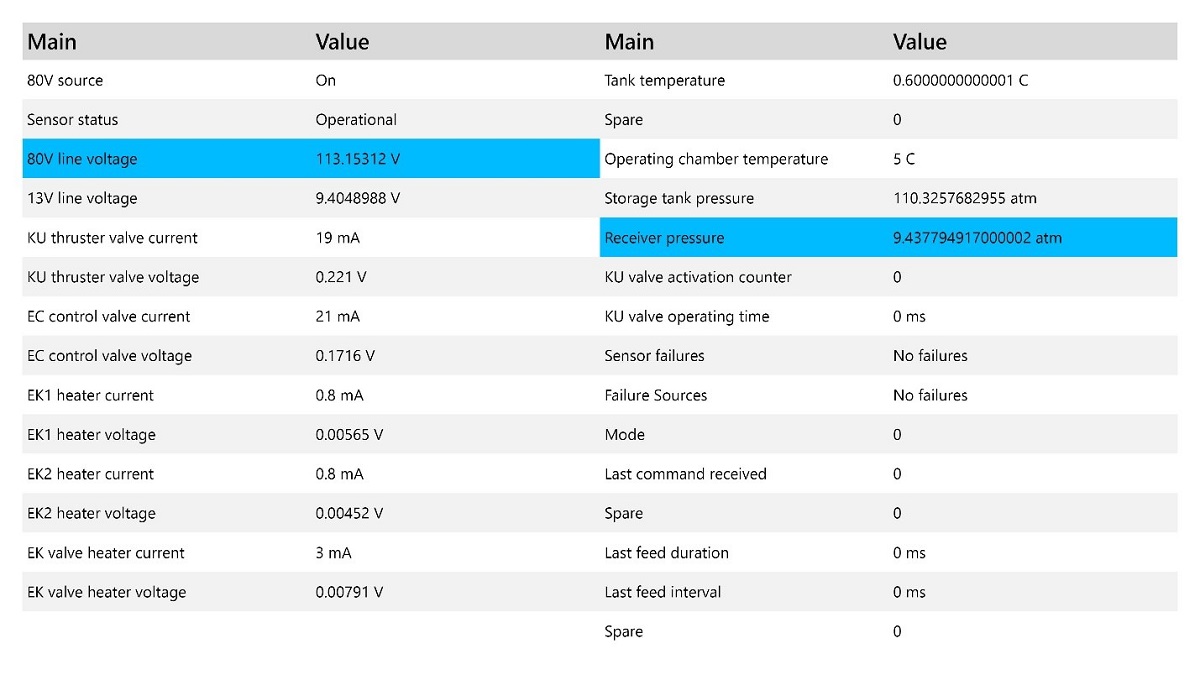
Geoscan-Edelveis spacecraft telemetry data at the end of the third stage
This is not the end of the cold gas thruster trials by far. Further experiments are needed to see what changes occur once the receiver is activated. The trial results will enable our specialists to program a change in the satellite’s orbit parameters.
Successful trials aside, the CubeSat also has an entertainment value, as it continues to beam breathtaking space imagery back to Earth. In addition to some night photos of St. Petersburg we shared earlier, the satellite’s camera recently witnessed the Northern lights caused by a powerful solar flare, which occurred on the night of April 23-24. As majestic as this natural phenomenon looks, it is known to often cause troubles to spacecraft operation, as intense flows of charged particles can disrupt sensitive electronics, even if it is hidden behind protective screens. However, Geoscan-Edelveis was not affected by the solar flares. Moreover, it even managed to capture the moment!
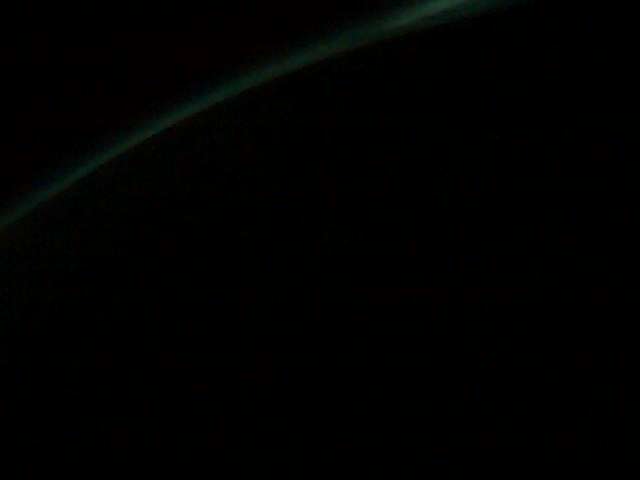

Check out the gallery below for more new photos!
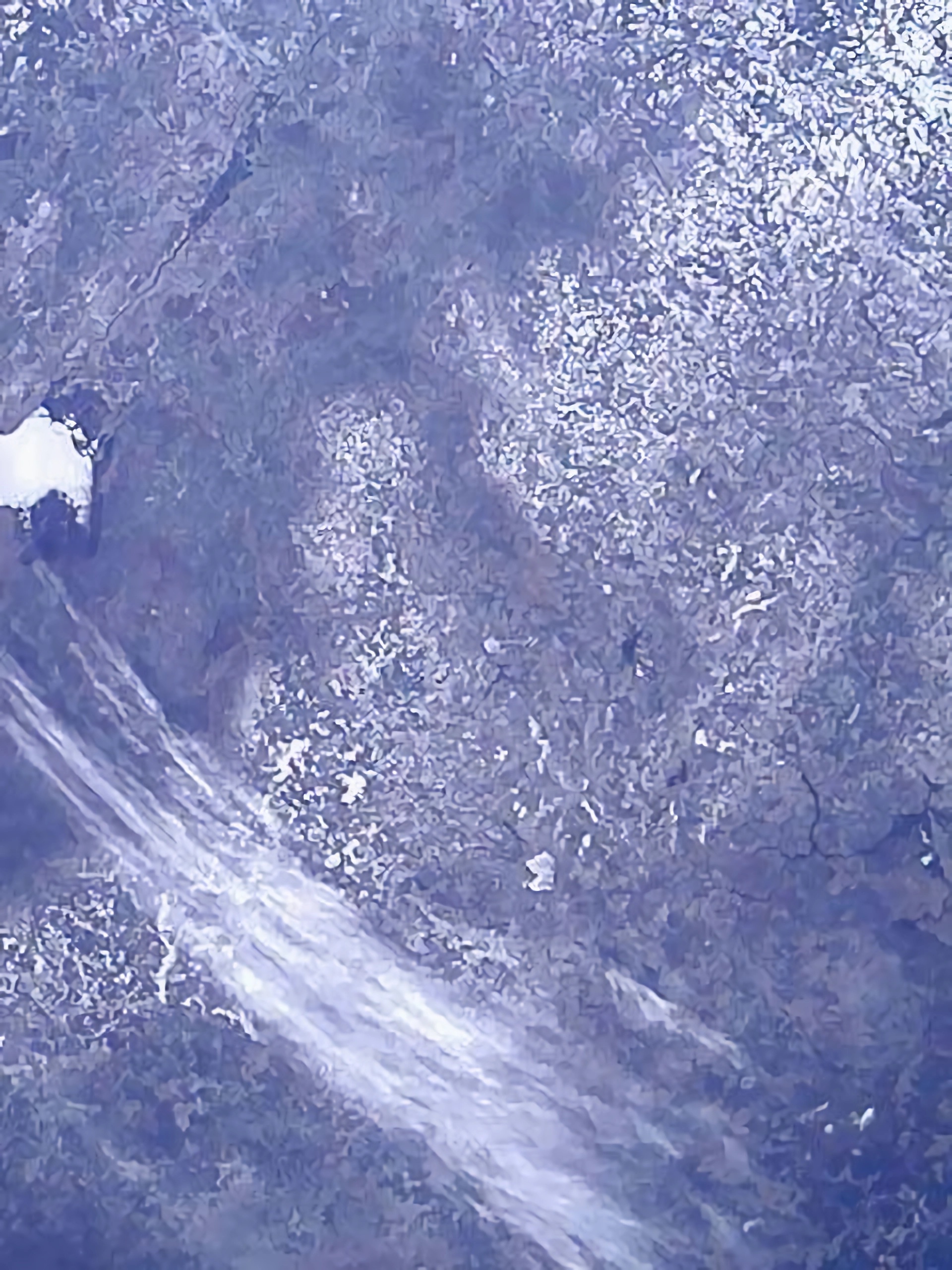
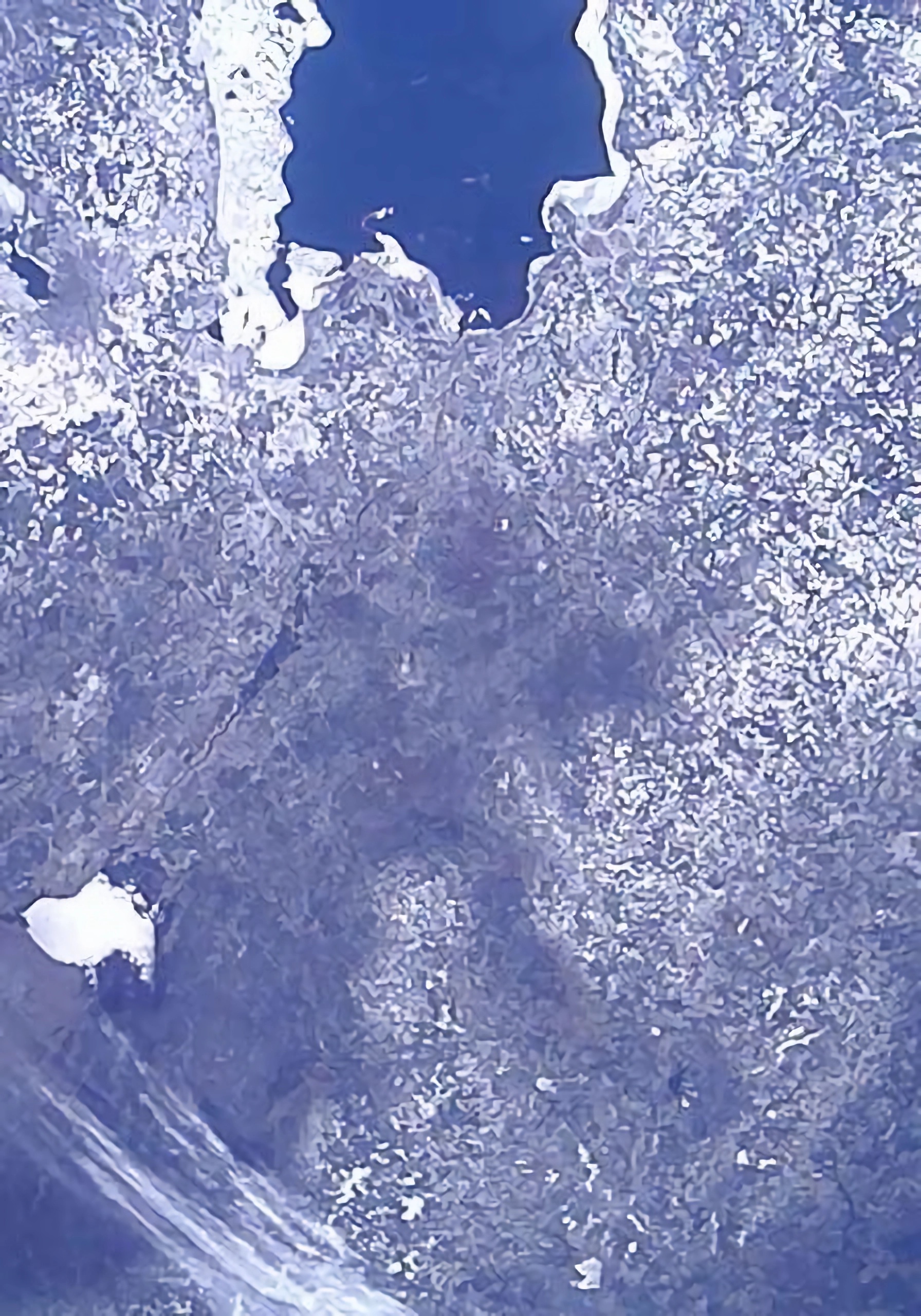
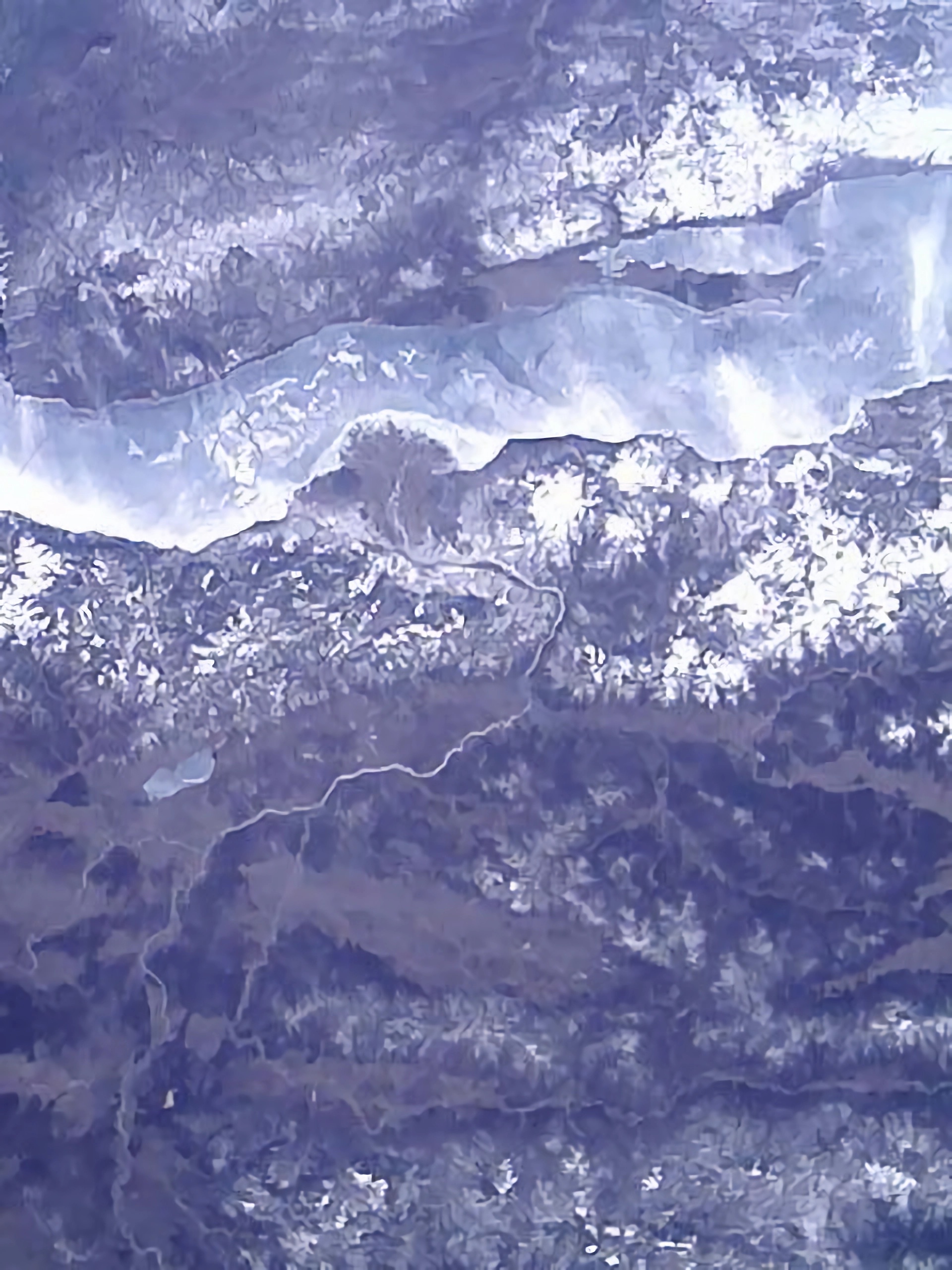
.%2013.04.2023.jpeg)
